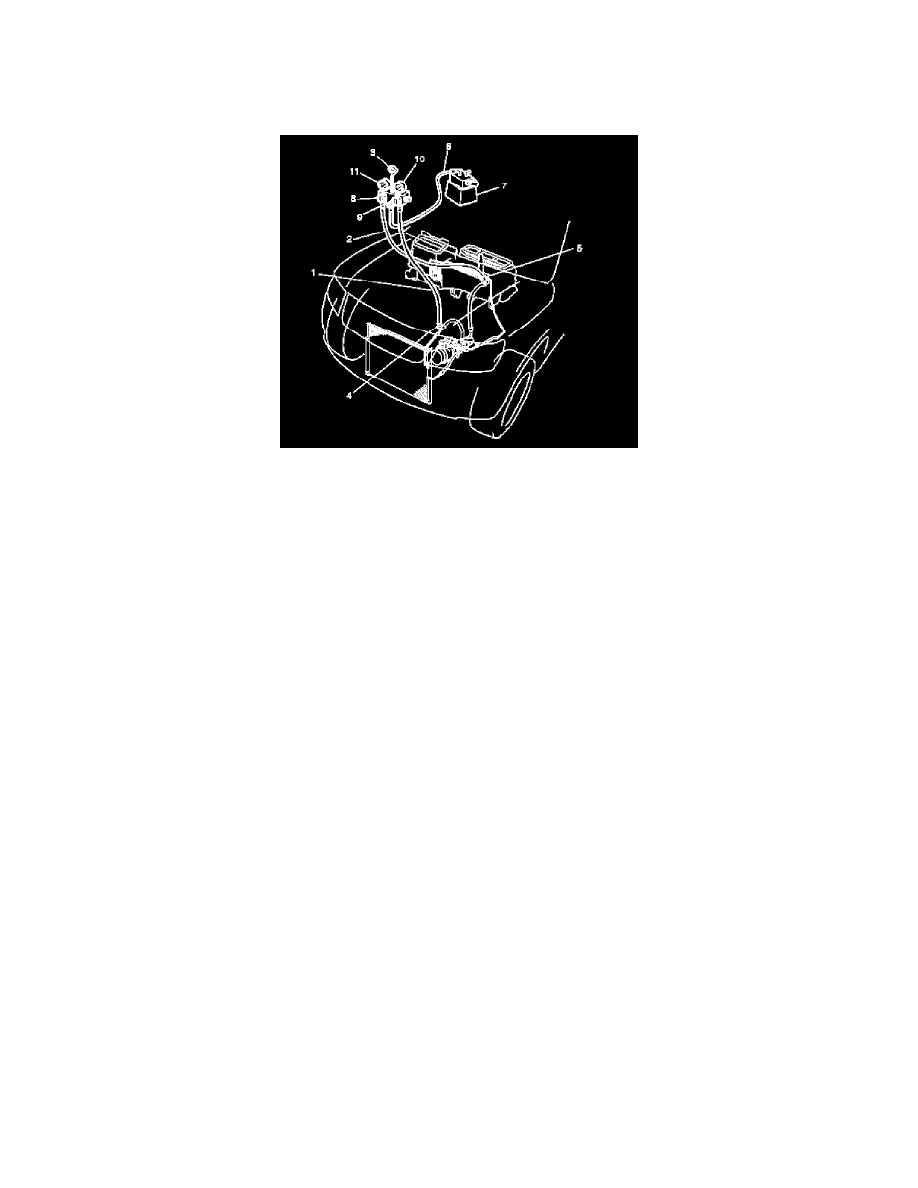Grand Vitara 2WD V6-2.7L (2006)

-
After recovering refrigerant from system the amount of removed compressor oil must be measured for replenishing compressor oil. Refer to
Precautions on Replenishing Compressor Oil.
-
When handling recovery and recycling equipment, be sure to follow the instruction manual for the equipment.
Evacuation
CAUTION: Do not evacuate before recovering refrigerant in system.
NOTE: Once A/C system circuit is opened (exposed to atmospheric air) air conditioning system must be evacuated by using a vacuum pump. The A/C
system should be attached with a manifold gauge set, and should be evacuated for approx. 20 minutes.
1. Connect high charging hose (1) and low charging hose (2) of manifold gauge set (3) respectively as follows:
High charging hose (1). High pressure charging valve (4) on discharge hose
Low charging hose (2). Low pressure charging valve (5) on suction pipe
2. Attach center charging hose (6) of manifold gauge set (3) to vacuum pump (7).
3. Operate vacuum pump (7), and then open discharge-side valve (9) (Hi) of manifold gauge set (3).
If there is no blockage in the system, there will be an indication on high pressure gauge (10).
In this case, open the other-side valve (8) (Lo) of the set and repair the system.
4. Approx. 10 minutes later, low pressure gauge (11) should show a vacuum lower than -100 kPa (-1.0 kg/sq.cm, -760 mmHg, -14.2 psi) providing
no leakage exists.
NOTE:
-
If the system does not show a vacuum below -100 kPa (-1.0 kg/sq.cm, -760 mmHg, -14.2 psi), close both valves, stop vacuum pump and
watch movement of low pressure gauge.
-
Increase in the gauge reading suggests existence of leakage. In this case, repair the system before continuing its evacuation.
-
If the gauge shows a stable reading (suggesting no leakage), continue evacuation.
5. Evacuation should be carried out for a total of at least 20 minutes.
6. Continue evacuation until low pressure gauge indicates a vacuum less than -100 kPa (-1.0 kg/sq.cm, -760 mmHg, -14.2 psi), and then close both
valves (8), (9).
7. Stop vacuum pump (7). Disconnect center charging hose (6) from pump inlet. Now, the system is ready for charging refrigerant.
Checking of A/C System for Pressure Leaks
After completing the evacuation, close manifold gauge high pressure valve (Hi) and low-pressure valve (Lo) and wait 10 minutes. Verify that
low-pressure gauge reading has not changed.
CAUTION: If the gauge reading moves closer to "0", there is a leak somewhere. Inspect the tubing connections, make necessary corrections. And then
evacuate system once again and make sure that there are no leaks.
Charge
CAUTION:
-
Because the sight glass is not used for this A/C system, do not perform an additional charge to the A/C system. To charge the proper amount of
refrigerant, recover and evacuate the A/C system first. And then, charge the proper amount of refrigerant into the A/C system.
-
Always charge through low pressure-side of A/C system at after the initial charging is performed from the high-pressure side with the engine
stopped.
